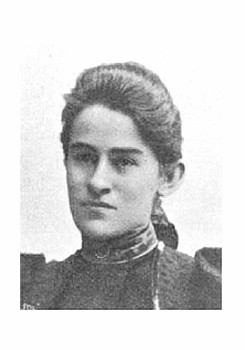|
- - - -
Anna Tumarkina
Tumarkina Anna Pavlovna (16.02.1875 – 07.08.1951)
Philosopher, historian of philosophy, psychologist. The first European woman - professor of philosophy.
She was born in the town of Dubrovno, Vitebsk region. She graduated from the girls 'school and teachers' courses in Kishinev. From 1892 she lived in Switzerland, studied at Bern University at the Faculty of Philosophy, History and Germanic. In 1895 she successfully defended her thesis on comparative analysis of the philosophical works of Herder and Kant, published in the first book of "the Berne Course of Philosophy", edited by L. Stein In 1898, aged 23, she got the position of a private lecturer at Bern University, becoming the first in Switzerland and in Europe woman - professor of philosophy. In 1906 in the same place she got the title of a titular professor, and in 1909 that one of an extraordinary professor. She taught aesthetics and the history of philosophy at Bern University until 1943.
She was the author of several monographs on philosophy and theoretical psychology, aesthetics and cultural studies, historical analysis of works of Spinoza, Kant and Herder, including: "Herder and Kant" (1896), "On the description of Justin Kerner" (1898), "Associative principle in the history of aesthetics "(1899)," The game abilities with Kant "(1905)," to the transcendental Method of Kant`s aesthetics"(1906)," The aesthetic ideal and ethical norms "(1907)," The critical issue in precritical writings of Kant "(1908)," Kant doctrine of things-in-itself "(1909)," Poetry and world outlook "(1919)," Romantic ideology "(1920)," How psychology can exhist as a science "(1921)," Prolegemony to scientific Psychology "(1923)," Apollonian and Dionisian in ancient Greek philosophy "(1927)," Methods of psychological research "(1929)," The Aesthetics of Johann Georg Sulzer (1933), "The essence and the formation of Swiss philosophy" (1948) and others. In 2000, one of the streets adjoining the old building of Bern University was named Tumarkinweg in her honour.

© National Academy of Sciences of Belarus, 2011
|
|


